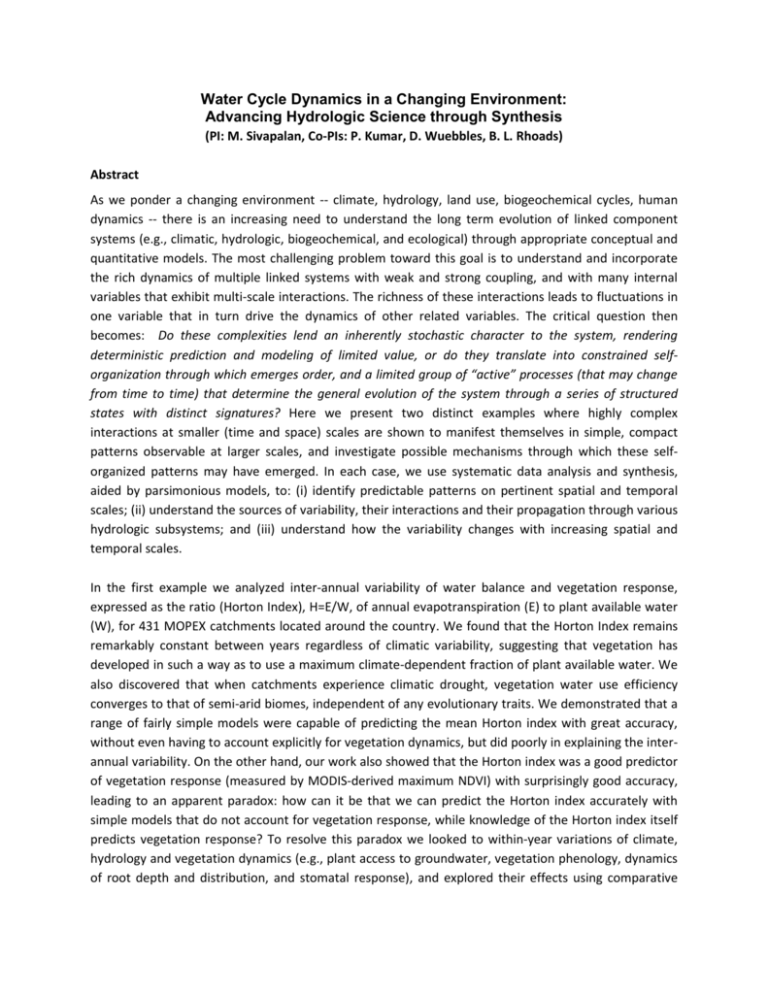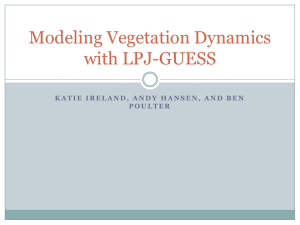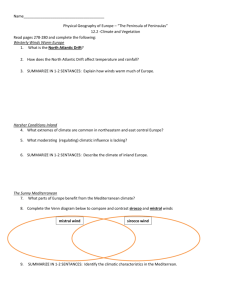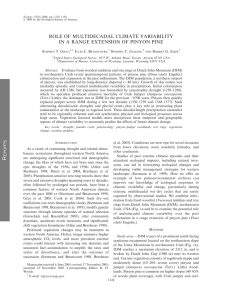doc - CWACES | Center for Water As a Complex Environmental
advertisement

Water Cycle Dynamics in a Changing Environment: Advancing Hydrologic Science through Synthesis (PI: M. Sivapalan, Co‐PIs: P. Kumar, D. Wuebbles, B. L. Rhoads) Abstract As we ponder a changing environment -- climate, hydrology, land use, biogeochemical cycles, human dynamics -- there is an increasing need to understand the long term evolution of linked component systems (e.g., climatic, hydrologic, biogeochemical, and ecological) through appropriate conceptual and quantitative models. The most challenging problem toward this goal is to understand and incorporate the rich dynamics of multiple linked systems with weak and strong coupling, and with many internal variables that exhibit multi-scale interactions. The richness of these interactions leads to fluctuations in one variable that in turn drive the dynamics of other related variables. The critical question then becomes: Do these complexities lend an inherently stochastic character to the system, rendering deterministic prediction and modeling of limited value, or do they translate into constrained selforganization through which emerges order, and a limited group of “active” processes (that may change from time to time) that determine the general evolution of the system through a series of structured states with distinct signatures? Here we present two distinct examples where highly complex interactions at smaller (time and space) scales are shown to manifest themselves in simple, compact patterns observable at larger scales, and investigate possible mechanisms through which these selforganized patterns may have emerged. In each case, we use systematic data analysis and synthesis, aided by parsimonious models, to: (i) identify predictable patterns on pertinent spatial and temporal scales; (ii) understand the sources of variability, their interactions and their propagation through various hydrologic subsystems; and (iii) understand how the variability changes with increasing spatial and temporal scales. In the first example we analyzed inter-annual variability of water balance and vegetation response, expressed as the ratio (Horton Index), H=E/W, of annual evapotranspiration (E) to plant available water (W), for 431 MOPEX catchments located around the country. We found that the Horton Index remains remarkably constant between years regardless of climatic variability, suggesting that vegetation has developed in such a way as to use a maximum climate-dependent fraction of plant available water. We also discovered that when catchments experience climatic drought, vegetation water use efficiency converges to that of semi-arid biomes, independent of any evolutionary traits. We demonstrated that a range of fairly simple models were capable of predicting the mean Horton index with great accuracy, without even having to account explicitly for vegetation dynamics, but did poorly in explaining the interannual variability. On the other hand, our work also showed that the Horton index was a good predictor of vegetation response (measured by MODIS-derived maximum NDVI) with surprisingly good accuracy, leading to an apparent paradox: how can it be that we can predict the Horton index accurately with simple models that do not account for vegetation response, while knowledge of the Horton index itself predicts vegetation response? To resolve this paradox we looked to within-year variations of climate, hydrology and vegetation dynamics (e.g., plant access to groundwater, vegetation phenology, dynamics of root depth and distribution, and stomatal response), and explored their effects using comparative analysis of flux tower data from several FLUXNET stations across the country, supported by coupled hydrologic-ecologic models of increasing complexity. This generated deep insights into the similarity and differences between vegetation responses in different biomes and climatic regions, and the manifestation in inter-annual variability. In the second example, we examined inter-annual variability in nutrient delivery ratio (NDR) for a range of watershed sizes, as moderated by interactions between hydrologic and biogeochemical processes across the climate-hillslope-stream network continuum. Two interesting patterns emerged – a “chemostatic” behavior (i.e., linear contaminant load-discharge relationship) in large watersheds, and a consistent pattern in the relationship between NDR and discharge across diverse range of watersheds (~ 50,000 km2) in the Mississippi Basin. To elucidate this observed behavior at large scales, we analyzed high resolution data from two experimental basins (Little Vermilion, IL, to investigate dissolved contaminants; Goodwin Creek, MS, to investigate sediment-laden contaminants). In addition, to explore the role of smaller scale (space and time) processes in producing large scale patterns we also developed a modeling framework that conceptualizes the landscape as comprising a set of dynamic, cascading, hierarchical, non-linear filters, which propagate and modify the variability inherent to the climatic and land-use inputs, and highlight the relative roles of climatic, transport (hydrologic) and reaction (biogeochemical) timescales, the role of memory or legacy effects, and the buffering role of ecosystems (e.g., vegetation, micro-organisms) across a range of space scales (local-- hillslope -- watershed -- river basin). Both the data-based and process model-based analyses helped to recognize the observed spatiotemporal patterns as “spiraling waves” emerging from coupled transport and attenuation processes occurring in a series of hierarchical filters and the episodic triggering required to overcome associated thresholds. The spiraling waves represent the spatio-temporal legacy of the forcing functions as they cascade through the hierarchical filters, the associated “spiraling distances” being governed by the relative magnitudes of retarded transport and exchange rates. These results have left us in awe about the power of parsimonious models to provide satisfactory explanations of observed patterns, in spite of the evident complexity and apparent heterogeneity of the landscape, even in highly human impacted landscapes. These results point to an underlying functional homogeneity, and the interacting roles of different parts of the landscape, and the roles of living things that bring about this apparent simplicity. Exactly how this happens and the possible existence of underlying organizing principles are puzzles that need to be pursued in future research.









